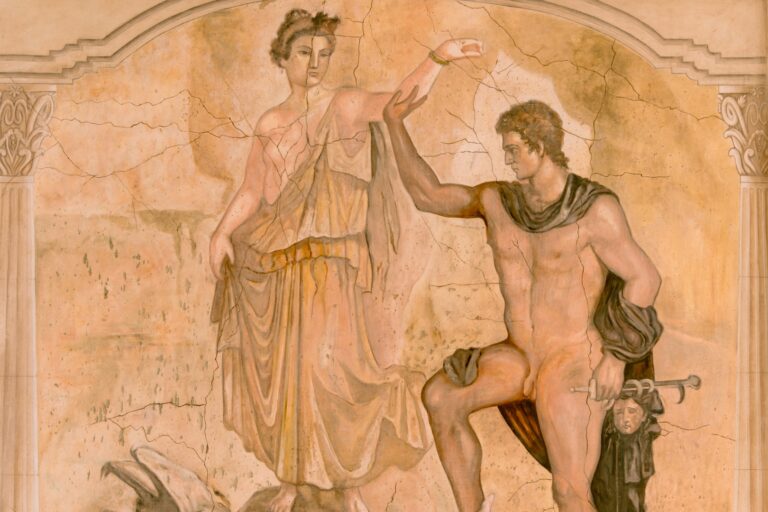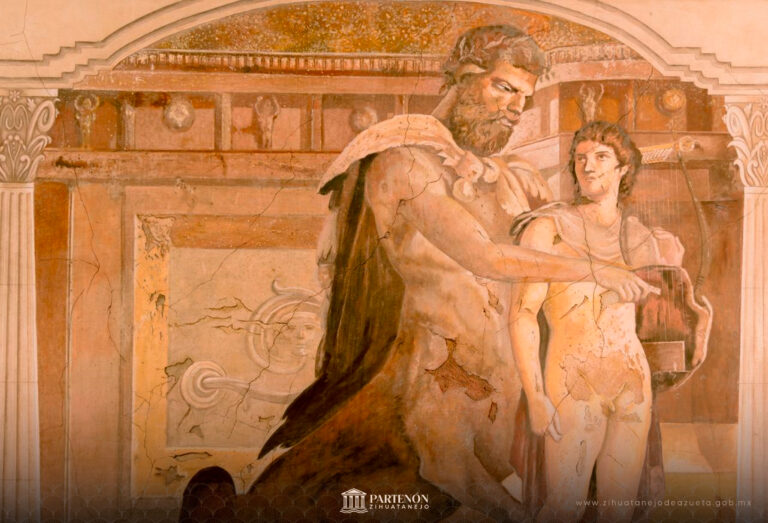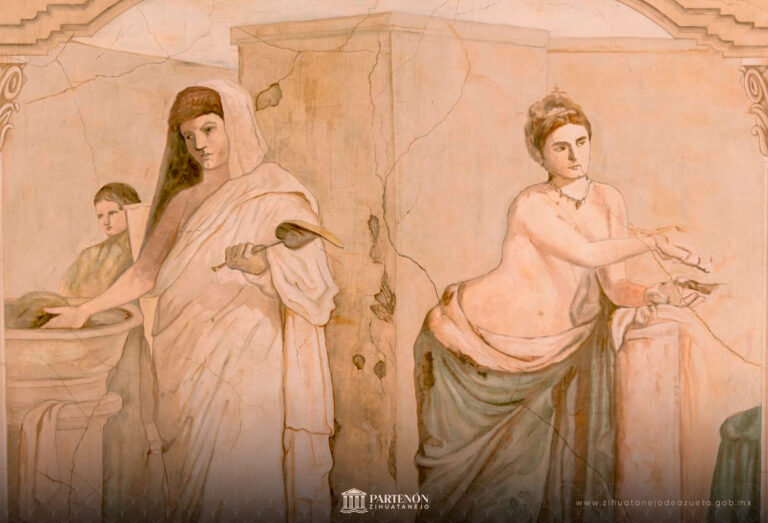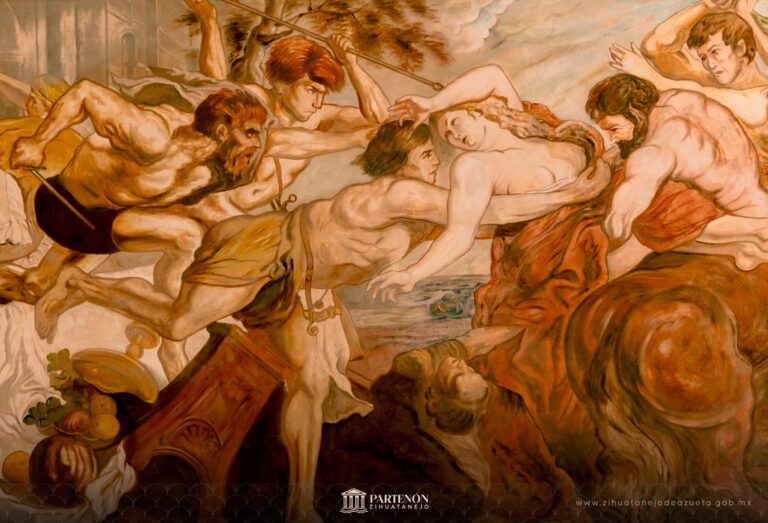Aldobrandini Wedding
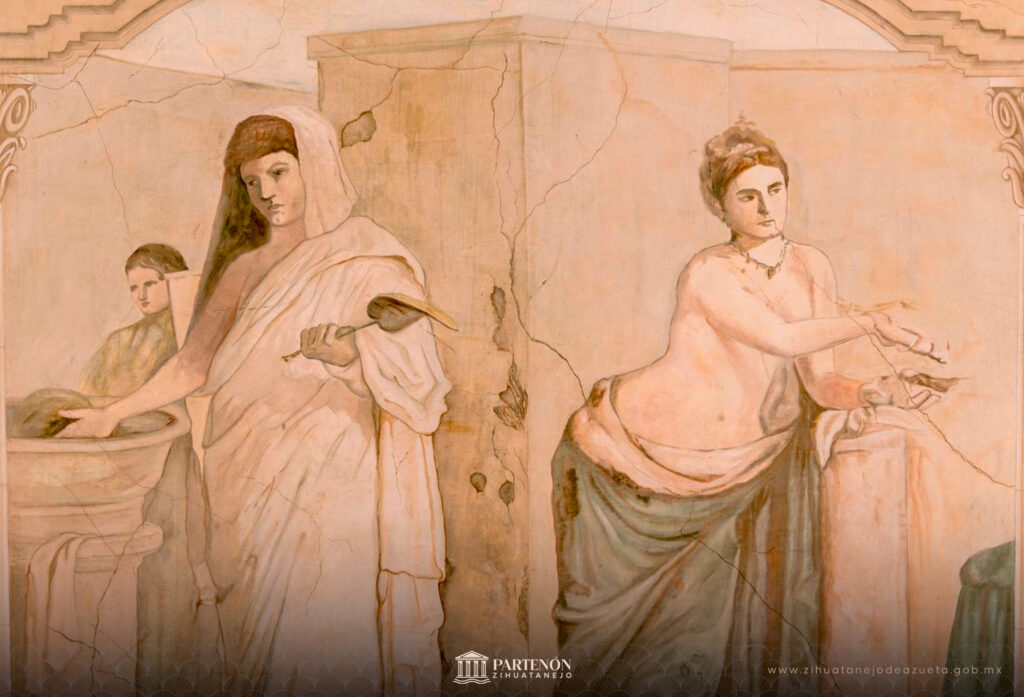
Part of the artwork “Aldobrandini Wedding”, a valuable copy, probably from the time of Augustus, which was considered the most notable of ancient art until the discovery of Pompeii.
It was acquired and brought to his estate by Aldobrandini Cardinal (hence the painting’s nickname), and later became the property of the artist Camuccini. In 1812, it was purchased by the banker Vicente Nielli, who donated it to the Vatican Museums, where it has been displayed since 1818.
The original paintwork measures 1.20 m high by 2.60 m wide and forms a triptych, divided into two columns, depicting ten characters. In the center is the bride covered with her wedding veil (flammeum), seated on the bed (kliné), accompanied by another topless woman who speaks to her, inspiring her. Some art critics believe she personifies Peitho, others Aphrodite, and still others that she is a friend of the bride.
On the left, a young woman leans against a column. Seated on a platform on the right is the groom. In the left-hand partition, a matron, probably the bride’s mother (perhaps Hera Telesia, protector of marriage), and two other women prepare the lustral water for the bride’s bath.
The German archaeologist and art historian Johann Joachim Winckelmann believes this artwork represents the marriage of Thetis and Peleus; other art critics believe it represents the marriage of Bacchus and Chora. Roberto disagrees with these opinions, although he agrees that it is a wedding.

